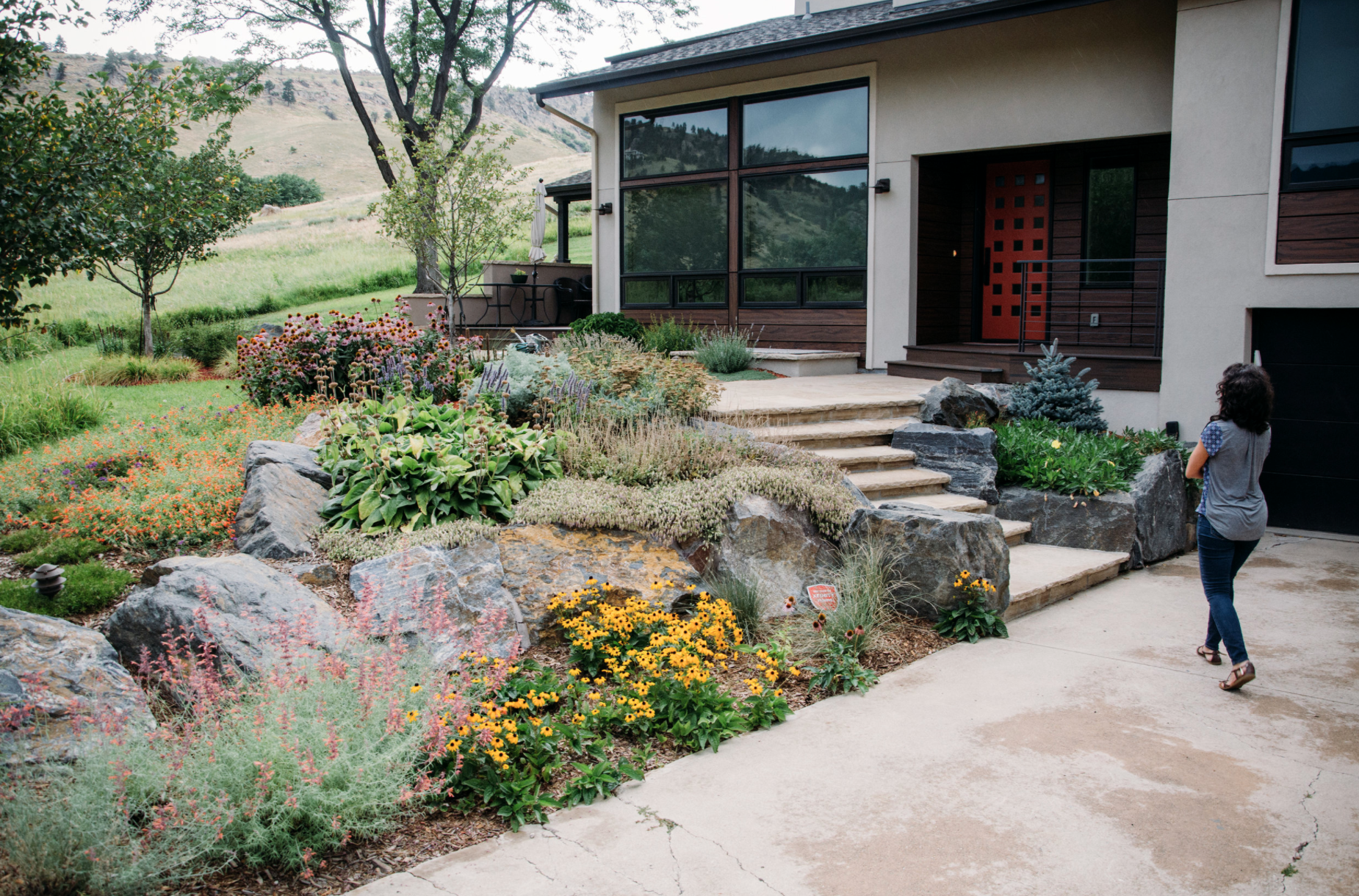By Emily Morris
The xeric garden—misconstrued as a barren and unflattering landscape—deserves a different narrative. While many people picture a landscape filled with swaths of rock and singular desert plants, the xeric garden can easily blossom into the opposite. The term “xeriscape” simply refers to landscapes designed to conserve water, a practice rooted in principles relating to sound planning and design, practical sod use, efficient irrigation, mulching, low water-use plants, and effective maintenance. Let’s look at some Tree of Life projects that practice these principles (and dispel some myths about xeriscaping along the way).
Myth #1: Xeriscapes are mostly comprised of rock
Actually, xeriscapes don’t need any rock at all; or they can be designed with a tasteful palette of stones and boulders. This Boulder, CO foothills design incorporates full-sun, low water plants interspersed between boulders to echo the Rocky Mountain feel. Instead of using vast swaths of rock, intentionally chosen boulders retain the hillside and create rhythm in the landscape.
Alternatively, larger patterns of rock can be used to complement plants, rather than overwhelm the space or give it the feeling of “dryness.” (Lento project)
Myth #2: Xeric gardens lack color
A drought-tolerant garden doesn’t equate to a cactus landscape. Perennials, shrubs, and plants of all types love the dry, well-drained soil of the xeric garden. This Tree of Life design, titled Arabesque, places Rudbeckia fulgida and Agastache rupestris together to create a colorful and contrasting garden expression.
A palette of blues and yellows and contrasting textures in this “Dolce” composition create a sunny feel at the entrance of the home.
Myth #3: Xeriscapes also lack lushness and shade
A dry climate can still produce a lush ecosystem of thriving plants. The cover of taller trees and shrubs create microclimates for shade-loving foliage. (Lince Rossa project)
Grasses, shrubs, and trees mingle to create a dense, low-water plant community in the Maestoso project.
Myth #4: You can’t have grass or lawn in a xeriscape
Sod can and should be used to suit the needs of garden users, but it doesn’t need to cover the entire landscape. A central grassy area often becomes a favorite space for pets, children, and adults alike. It can be used as a section or “room” in the landscape while alternate surfaces create other designed experiences. For example, our Vivace project uses sod, rock, pavers and planting to establish a program of play, dining, and lounging in this backyard space.
Myth #5: Xeric landscapes are low-growing and sparse
Screens and edges can be defined by xeric tall grasses, shrubs, and trees. They should be planted densely to keep out weeds and create plant communities that interact and evolve with each other. See how our Tosto and Arabesque projects use tall and dense plantings to achieve screening along a property edge and color along an entrance walkway.
Myth #6: Xeriscapes don’t have to be maintained
Actually, we prefer the word “stewardship” when it comes to nurturing a landscape. While “maintenance” describes something done to a machine to keep it running, “stewardship” describes the guidance given to an evolving plant community. It’s true that xeric gardens do not require as much of this stewardship as other garden types, but they are not maintenance-free. Oftentimes, our clients choose to invest in our Design/Build Landscape Maintenance Package to keep their garden pristine, while others enjoy tending to the garden themselves as a hobby. Either way you choose, a little landscape stewardship will go a long way in ensuring the beauty and longevity of your garden.










